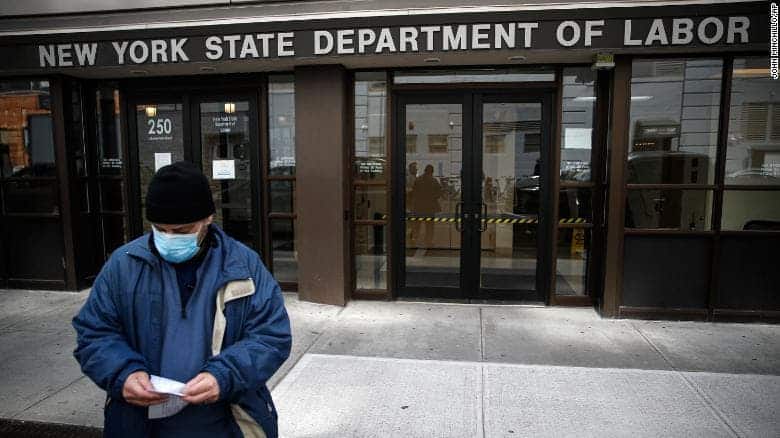With many states telling their residents to stay at home, the number of US coronavirus cases has already exceeded 200,000. This has not only challenged the health system but also the economy as a whole, with millions of citizens asking for assistance from the state.

First-time claims for unemployment benefits have surged more than 3,000% since early March, as businesses continue to lay off and furlough workers amid the coronavirus outbreak. Up to 6.6 million US workers filed for their first week of unemployment benefits in the week ending March 28 — a new historic high.
That was far greater than economists had expected, suggesting a severe job market decline. Including the prior week’s 3.3 million initial claims, Americans have filed nearly 10 million jobless claims in the last two weeks alone. That corresponds to roughly 6% of America’s 165 million-strong workforce, Citi economist Andrew Hollenhorst said.
“Further job loss expected in coming weeks is very likely to push unemployment above 10%, even taking account of a potentially steep decline in the labor force participation rate, as some displaced workers are neither furloughed nor looking for work,” Hollenhorst wrote in a note.
Every state reported an increase in claims. The biggest in terms of total filings were Pennsylvania (362,012), Ohio (189,263) and Massachusetts (141,003). The smallest gains came in South Dakota (1,571), West Virginia (2,671), and Vermont (3,125).
States have different rules on who can file for unemployment benefits. Nevertheless, the Trump administration made some restrictions more flexible. For example, contractors and self-employed workers, who don’t usually qualify, can now receive benefits through a pandemic unemployment assistance program.
Whether this massive claim number was the worst of it remains to be seen. Ahead of the coronavirus outbreak, weekly first-time claims had been hovering in the low 200,000s. This shift in the US labor market “implied a real-time unemployment rate of 10.1% at a minimum,” Joseph Brusuelas, chief economist at RSM, told CNN.
Bruselas argued that the government should work on a next-phase fiscal aid package to “target plugging the holes that are being blown in state and local budgets, in addition to Federal Reserve purchases of state and municipal debt.”
The government has already approved the CARES Act to combat the effects of the coronavirus outbreak last week. It is the largest economic relief bill in U.S. history and will allocate $2.2 trillion in support to individuals and businesses affected by the pandemic and economic downturn.
The March jobs report, which is due tomorrow, is not expected to look quite as dire. Economists estimate a loss of 100,000 jobs, with the unemployment rate inching up to 3.8%, from its historic low of 3.5%. The report is based on data from around the middle of the month — which was before millions filed for unemployment benefits for the first time.


